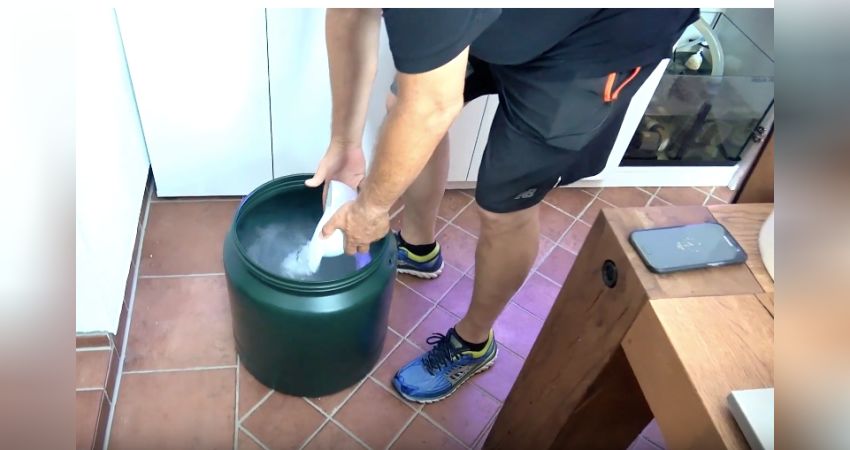How a saltwater aquarium is created Part 17: Regular water changes

Opinions will certainly not always be unanimous on the subject of regular water changes. Some aquarists "run" their system entirely without water changes, others work with a 10% water change every week, or even 20% every 2-3 weeks. We belong to the 10% change group.
I still remember our first large 1000-litre seawater aquarium quite well. It was in top condition for many years, but then the problems started little by little. Today, this is known as "OLD TANK Syndrome". Of course, we did water changes back then but certainly not as often as is often propagated today.
Today, we do not change the water in the tank as often as we do today.
It is now believed that the concentrations of certain substances have caused the pools to then deteriorate. It is considered very likely that this could have been avoided with much more intensive water changes.
With regular water changes, many unwanted substances are quickly removed from the cycle and at the same time desired substances are added to the aquarium.Water changes thus prevent both deficiencies and enrichment and stabilise the entire system in the long term.
.The following points are particularly relevant:
* Discharge of nutrients such as nitrate (No3), phosphate (Po4) yellows, nettle poisons, toxins etc.
* Balancing the values of magnesium and calcium
.* Supply of other trace elements
.In addition, there is no denying that you can usually see the corals in the aquarium every time the water is changed.

So today we are strictly sticking to that and changing 10% the week.
Of course, we also filmed the first water change in the Armatus 400. Even though this should be obvious, a few more tips. It is best to turn off the lights for the time of the change (protection of the corals), the pumps and the skimmer anyway (protection against overflow)
.If you like it much more comfortable, you can read the article here. The automatic water change is described there.
Automatically changing water - Sometimes it's the little things.... by Immo Gerber
How do you like this article?
Info
Author

Bookmark
Comments
Topics
Similar articles
- 09 - The protein skimmer
- 04 - Light
- How a saltwater aquarium is created-Part 4: The initial water
- How a marine aquarium is created Part 39: Montipora snails Phestilla sp.
- How a marine aquarium is created Part 31: No more filter socks!
- How a marine aquarium is created Part 42: Our solution for a power failure
- 13 - Electrical safety
- 24 - Horn corals or gorgonians
- The nano reef: set-up and basics
- How a marine aquarium is created-Part 15 and 16: first corals, cleaning crew and algae phases
Comments To the top
ich verfolge deine Videos mit großem Interesse. Ich betreibe seit einiger Zeit die Meerwasser Aquaristik, ich bin in deinem aktuellen Video welches ich hier nicht finde allerdings aber auf Youtube in deinem Kanal auf etwas für mich sehr interessantes gestoßen. Du hast dir dort einen Halter für deine Dosieranlage bauen lassen, meine frage nun : WER MACHT DIES? Es wäre echt hilfreich wenn ich die Teile nicht immer selbst basteln müsste die ich mir so ausdenke.
Eine Antwort wäre sehr nett, ich verstehe dich da in dem Video arkustisch einfach nicht.
Ansonsten immer weiter so ihr seit ein tolles Team. Mein Sohn (8) und ich (38) verfolgen deine Videos immer sehr interessiert.
Gruß Dennis
Vielen lieben Dank für deinen Kommentar
Das ist eine Halterung der Firma Detaylor.
Der Artikel dazu mit Link, also Teil 19 der Doku, ist auch gerade erschienen.
www.korallenriff.de
Viele Grüße und Danke ????
Gröbere und Claudia
Please register
In order to be able to write something yourself, you must register in advance.







